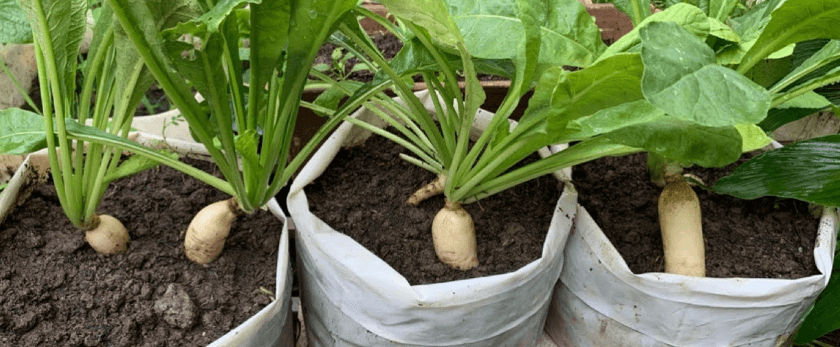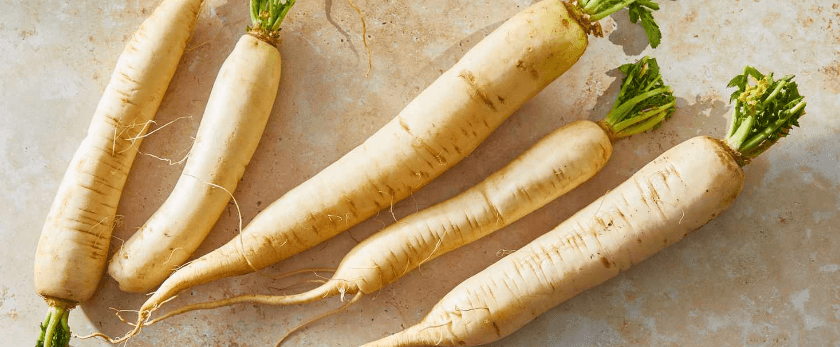Daikon radish, also known as Japanese radish, is a versatile and nutritious vegetable that is easy to grow in your own backyard. With its crisp texture and mild, slightly sweet flavor, daikon radish is a popular ingredient in many Asian dishes. But did you know that it is also a great addition to your garden? In this article, we will discuss how to grow daikon radish and the best practices for caring for this vegetable.
What is Daikon Radish?
Daikon radish (Raphanus sativus) is a root vegetable that belongs to the Brassicaceae family, which includes other popular vegetables like broccoli, cabbage, and kale. It is native to Asia and is widely cultivated in Japan, China, and Korea. Daikon radish has a long, white root that can grow up to 18 inches in length and 3 inches in diameter. It has a thin, pale green skin and a crisp, white flesh.

How to Care for Daikon Radish
Watering
Daikon radish requires consistent moisture to grow properly. It is important to keep the soil evenly moist, but not waterlogged. Water deeply once a week, or more frequently during hot and dry weather. Avoid overhead watering, as it can lead to fungal diseases. Instead, water at the base of the plant to keep the foliage dry.
Light
Daikon radish prefers full sun, but it can also tolerate partial shade. Make sure to plant it in an area that receives at least 6 hours of sunlight per day. If you are growing daikon radish in a container, place it in a sunny spot on your patio or balcony.
Soil
Daikon radish grows best in loose, well-draining soil with a pH level between 6.0 and 7.0. If your soil is heavy and compacted, add organic matter such as compost or aged manure to improve its texture and drainage. Avoid planting daikon radish in soil that is too acidic, as it can stunt its growth.
Fertilizer
Daikon radish is a heavy feeder and requires regular fertilization to grow well. Before planting, mix in a balanced fertilizer into the soil. Once the plants have established, side-dress them with a nitrogen-rich fertilizer every 3-4 weeks. Alternatively, you can use organic fertilizers such as fish emulsion or compost tea.
Pruning
Daikon radish does not require pruning, but you can thin out the seedlings to give the remaining plants enough space to grow. Thin the plants to 4-6 inches apart when they are about 2 inches tall. This will allow the roots to develop properly and prevent overcrowding.
What is the Best Time to Grow Daikon Radish?
Daikon radish is a cool-season crop that grows best in temperatures between 50-65°F. It can be grown in both spring and fall, but it is important to avoid extreme temperatures. Plant daikon radish in early spring, 2-3 weeks before the last frost date, or in late summer for a fall harvest. In warmer climates, daikon radish can also be grown in winter.
Common Problems with Daikon Radish
Pests
Daikon radish is relatively pest-resistant, but it can still be affected by some common garden pests. Flea beetles, aphids, and root maggots are the most common pests that can attack daikon radish. To prevent these pests, keep your garden clean and free of debris, and use row covers to protect your plants.
Diseases
Daikon radish is susceptible to some fungal diseases, such as clubroot and powdery mildew. To prevent these diseases, make sure to rotate your crops every year and avoid planting daikon radish in the same spot. Also, avoid overhead watering and keep the foliage dry.
Bolting
Bolting is when a plant produces flowers and seeds prematurely, usually due to stress caused by extreme temperatures or lack of water. Daikon radish is prone to bolting in hot weather, so make sure to keep the soil consistently moist and provide shade during the hottest part of the day.
Conclusion
Growing daikon radish is a rewarding experience that can provide you with fresh, nutritious vegetables right from your own backyard. By following these tips on how to care for daikon radish, you can ensure a successful harvest and enjoy this versatile vegetable in your meals. Remember to also practice responsible disposal methods for a sustainable future, such as composting any leftover plant material. Happy gardening!










